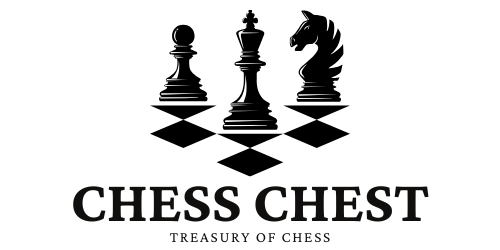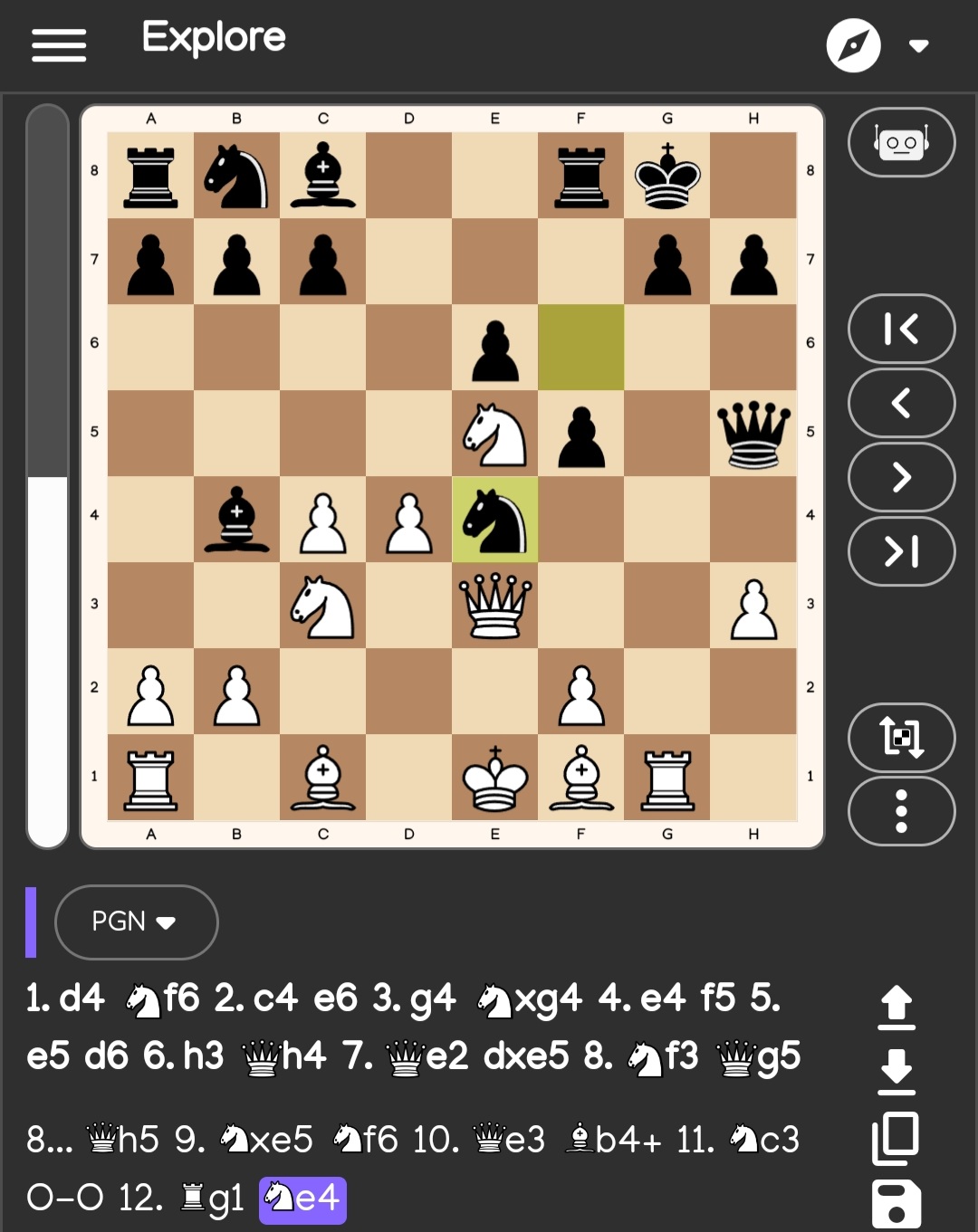THANKS FOR WATCHING. CHESS IS THE BEST!!!!!!!
Support my channel and subscribe.
Follow me on:
https://www.facebook.com/jozarov/
https://twitter.com/jozarov
https://www.instagram.com/jozarov/
https://lichess.org/@/jozarov
You can support my channel on https://www.paypal.me/jozarov
1. d4 Nf6 2. Nf3 d6?! { (0.12 → 0.70) Inaccuracy. e6 was best. } (2… e6 3. c4 d5 4. Nc3 c6 5. e3 Nbd7 6. Be2 b6 7. O-O) 3. Nc3 Nbd7 4. e4 e5 { C41 Philidor Defense: Lion Variation } 5. Bc4 Be7 6. O-O O-O 7. a4 c6 8. Re1 Qc7 9. h3 Rb8 10. Qd3 Re8?? { (0.88 → 4.16) Blunder. b6 was best. } (10… b6 11. Be3) 11. Be3?? { (4.16 → 1.24) Blunder. Ng5 was best. } (11. Ng5 Rf8) 11… b6?? { (1.24 → 7.11) Blunder. a5 was best. } (11… a5 12. Ng5 Rf8 13. f4 h6 14. Nf3 Ra8 15. Ba2 b6 16. Qd2 Re8 17. Rad1 Bb7 18. Qf2) 12. Bxf7+ Kxf7 13. Qc4+ Kg6?? { (7.00 → Mate in 4) Checkmate is now unavoidable. d5 was best. } (13… d5 14. exd5) 14. Nh4+ Kh5 15. Qe2+ Kxh4 16. g3+ Kxh3 17. f3 Kxg3 18. Qh2+ Kxf3 19. Qg2# { White wins by checkmate. } 1-0
Philidor Defence:
1. e4 e5
2. Nf3 d6
The opening is named after the famous 18th-century player François-André Danican Philidor, who advocated it as an alternative to the common 2…Nc6. His original idea was to challenge White’s centre by the pawn thrust …f7–f5.
Today, the Philidor is known as a solid but passive choice for Black, and is seldom seen in top-level play except as an alternative to the heavily analysed openings that can ensue after the normal 2…Nc6. It is considered a good opening for amateur players who seek a defensive strategy that is simpler and easier to understand than the complex positions that result from an opening such as the French Defence.
3…exd4
The most common Black response is 3…exd4 which relieves the central tension, although it gives up the centre. After 4. Nxd4 Nf6 5. Nc3, Black normally continues …Be7 and …0-0 (the Antoshin Variation) and achieves a strong defensive position. A sample line is: 4.Nxd4 Nf6 5.Nc3 Be7 6.Bc4 0-0 7.0-0 c5, and the position is equal.
Instead of 4.Nxd4, White can play 4. Qxd4, as Paul Morphy favoured, intending 4…Nc6 5.Bb5 Bd7 6.Bxc6 Bxc6 7.Nc3 Nf6 8.Bg5 followed by 0-0-0. This line was played in many 19th-century games.
Hanham Variation:
Position after 7…c6. Black’s aim in the Hanham is a strongpoint defence of e5.
The other main option for Black is to maintain the central tension and adopt a setup with …Nd7, …Be7, and …c6. This plan is named the Hanham Variation (after the American chess master James Moore Hanham) and was favoured by Aron Nimzowitsch. A common line is: 3… Nf6 4. Nc3 Nbd7 5. Bc4 Be7 6. 0-0 (6.Ng5 is an interesting alternative: after 6…0-0 7.Bxf7+ Rxf7 8.Ne6 Qe8 9.Nxc7 Qd8 10.Nxa8, White is up material, but Black can develop a strong initiative after, for example, 10…b5 11.Nxb5 Qa5+) 6… 0-0 7. a4 (to prevent …b5) c6 (see diagram).
Grandmaster (GM) Larry Kaufman notes that the Hanham Variation aims to maintain Black’s pawn on e5, analogously to closed lines of the Ruy Lopez, and opines that “it would be quite popular and on a par with the major defences to 1.e4, except for the annoying detail that Black can’t actually reach the Hanham position by force.
As an alternative to 4.Nc3 in response to Black’s 3…Nf6, according to both Kaufman and GM Christian Bauer, White retains some advantage with: 4. dxe5! Nxe4 5. Qd5! (the Rellstab Variation;5.Nbd2 is the Sokolsky Variation[4]) 5… Nc5 6. Bg5 Be7 7. exd6 Qxd6 8. Nc3.[5][6]
Alternative move order
Black sometimes tries 3… Nd7 intending 4.Nc3 Ngf6, reaching the Hanham Variation. But then 4. Bc4! is awkward for Black to meet, since 4…Ngf6 loses to 5.Ng5, and 4…Be7 loses a pawn to 5.dxe5 Nxe5 (5…dxe5?? 6.Qd5! wins) 6.Nxe5 dxe5 7.Qh5!So 4… c6 is best for Black, but leaves White with the advantage of the bishop pair after 5. 0-0 Be7 6. dxe5 dxe5 (6…Nxe5 loses a pawn to 7.Nxe5 dxe5 8.Qh5) 7. Ng5! Bxg5 8. Qh5! Qe7 and now 9.Bxg5 or 9.Qxg5
Black experiments to reach the Hanham Variation
In recent years, Black has experimented with other move orders in an attempt to reach the Hanham Variation while avoiding 3…Nf6 4.dxe5! and 3…Nd7 4.Bc4!
One such line is 1. e4 d6 2. d4 Nf6 3. Nc3 Nbd7 intending 4.Nf3 e5. White can deviate, however, with 4.f4!? or even 4.g4!
Another try is 1. e4 d6 2. d4 Nf6 3. Nc3 e5 which transposes to the Hanham after 4.Nf3 Nbd7, but White can instead try to gain a small advantage with 4. dxe5 (Kaufman opines that 4.Nge2 is “also promising”) 4… dxe5 5. Qxd8+ Kxd8 6. Bc4. After 4.dxe5, Bauer concludes that “White stands a trifle better” but that “provided he plays accurately, Black doesn’t have much to fear following 6.Bc4, by choosing any of the three valid replies, 6…Ke8, 6…Bb4, or 6…Be6. Then 7.Bxe6 fxe6 his position remains a hard nut to crack.”






